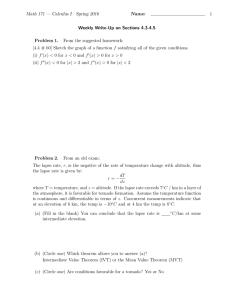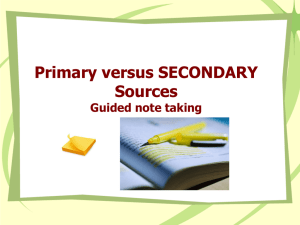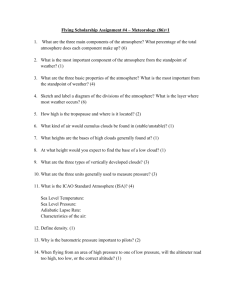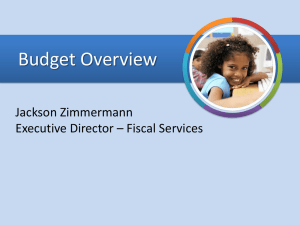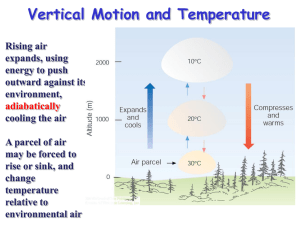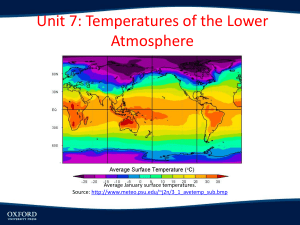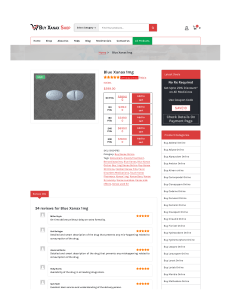Document 13391297
advertisement
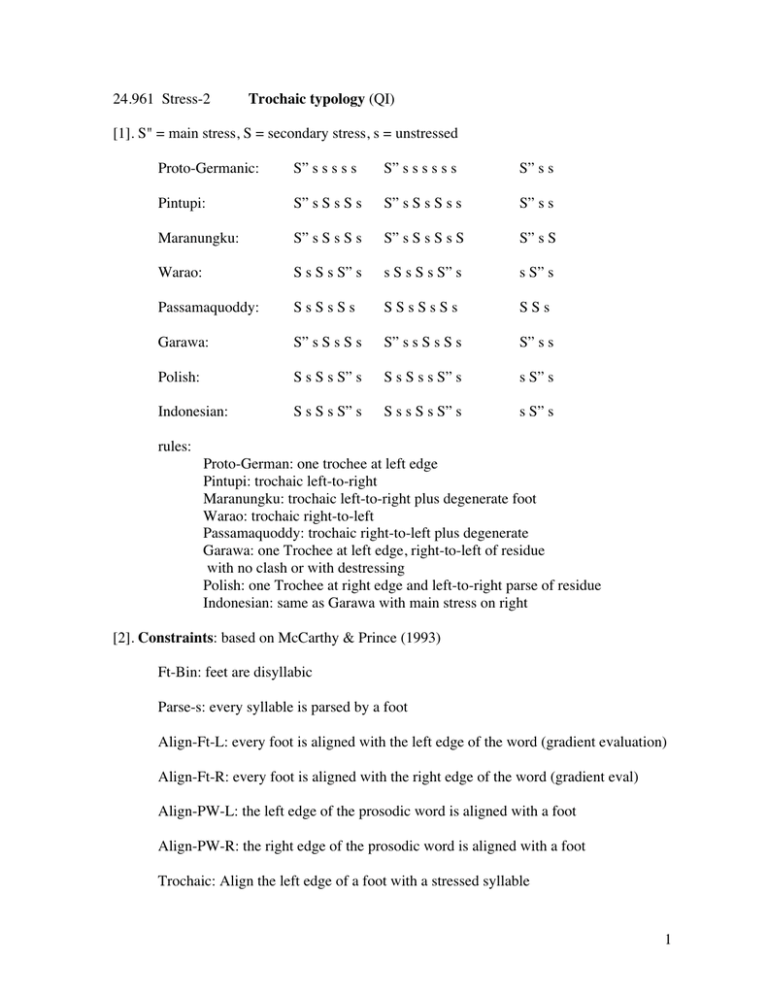
24.961 Stress-2 Trochaic typology (QI) [1]. S" = main stress, S = secondary stress, s = unstressed Proto-Germanic: S” s s s s s S” s s s s s s S” s s Pintupi: S” s S s S s S” s S s S s s S” s s Maranungku: S” s S s S s S” s S s S s S S” s S Warao: S s S s S” s s S s S s S” s s S” s Passamaquoddy: SsSsSs SSsSsSs SSs Garawa: S” s S s S s S” s s S s S s S” s s Polish: S s S s S” s S s S s s S” s s S” s Indonesian: S s S s S” s S s s S s S” s s S” s rules: Proto-German: one trochee at left edge Pintupi: trochaic left-to-right Maranungku: trochaic left-to-right plus degenerate foot Warao: trochaic right-to-left Passamaquoddy: trochaic right-to-left plus degenerate Garawa: one Trochee at left edge, right-to-left of residue with no clash or with destressing Polish: one Trochee at right edge and left-to-right parse of residue Indonesian: same as Garawa with main stress on right [2]. Constraints: based on McCarthy & Prince (1993) Ft-Bin: feet are disyllabic Parse-s: every syllable is parsed by a foot Align-Ft-L: every foot is aligned with the left edge of the word (gradient evaluation) Align-Ft-R: every foot is aligned with the right edge of the word (gradient eval) Align-PW-L: the left edge of the prosodic word is aligned with a foot Align-PW-R: the right edge of the prosodic word is aligned with a foot Trochaic: Align the left edge of a foot with a stressed syllable 1 Iambic: Align the right edge of a foot with a stressed syllable [3]. Analysis: Germanic:Align-Ft-L >> Parse-s (long lapses allowed) Align-Ft-L >> Align-Ft-R: leftward orientation Pintupi: Parse-s >> Align-Ft-L >> Align-Ft-R: multiple, left-oriented footing Ft-Bin >> Parse-s: lapse at right edge in odd-parity words Maranungku: Parse-s >> Align-Ft-L >> Align-Ft-R: multiple, left-oriented footing Parse-s >> Ft-Bin: monosyllabic foot at right edge in odd-parity words Warao: Parse-s >> Align-Ft-R >> Align-Ft-L: multiple, right-oriented footing Ft-Bin >> Parse-s Passamaquoddy: Parse-s >> Align-Ft-R >> Align-Ft-L: multiple, right-oriented footing Parse-s >> Ft-Bin (stress clash in odd-parity words) Garawa: Germanic+Warao Parse-s >> Align-Ft-R >> Align-Ft-L: multiple, right-oriented footing Ft-Bin >> Parse-s Align-PW-L >> Align-FT-R Polish: Pintupi+Swahili Parse-s >> Align-Ft-L >> Align-Ft-R: multiple, left-oriented footing Align-PW-R >> Align-Ft-L Indonesian: same as Garawa except that main stress is penultimate Parse-s >> Align-Ft-R >> Align-Ft-L: multiple, right-oriented footing Ft-Bin >> Parse-s Align-PW-L >> Align-FT-R Align-PW-R >> Align-PW-L alternative Indonesian analysis (Kenstowicz 1996): Main stress is penultimate (top-down effect) [4] grammar tour Germanic /1 2 3 4 5 6/ > (1 2) 3 4 5 6 1 (2 3) 4 5 6 (1 2) (3 4) 5 6 (1 2 ) (3 4) (5 6) Align-Ft-L * ** **+**** Parse-s **** *** ** 2 Pintupi /1 2 3 4 5 6/ >(1 2) (3 4) (5 6) 7 (1 2) 3 4 5 6 7 /1 2 3 4 5 6 7/ > (1 2) (3 4) (5 6) 7 (1 2) (3 4) (5 6) (7) Parse-s Align-Ft-L **+**** **** Ft-Bin Parse-s * * Maranungku /1 2 3 4 5 6 7/ Parse-s 1 (2 3) (4 5) (6 7) * >(1 2) (3 4) (5 6) 7 * Align-Ft-L Align-Ft-R *+***+***** ****+** **+**** *****+***+* Passamaquoddy / 1 2 3 4 5 6 7/ Parse-s >(1) (2 3) (4 5) (6 7) 1 (2 3) (4 5) (6 7) * Ft-Bin * Garawa / 1 2 3 4 5 6 7/ 1 (2 3) (4 5) (6 7) ->(1 2) 3 (4 5) (6 7) Align-PW-L * Align-FT-R ****+** *****+** Polish /1234567/ (1 2) (3 4) (5 6) 7 ->(1 2) (3 4) 5 (6 7) Align-PW-R * Align-Ft-L **+**** ** +***** Align-PW-L * Align-FT-R ****+** *****+** Align-PW-R Align-PW-L * Indonesian /1 2 3 4 5 6 7/ (1 2) 3 (4 5) (6 7) /1 2 3/ > 1 (2 3) (1 2) 3 * [5] Reductive analysis (Kager 2001, Alber 2001/5) motivations: • For even parity words with Foot Binarity and Parse-syll undominated, there are just two options, which are covered by Iambic (sS)(sS)(sS) vs. Trochaic (Ss)(Ss)(Ss) 3 • • • • for odd-parity words where Ft-Bin >> Parse, we have an unparsed syllable RK rejects gradient alignment as an anachronism of directional parsing rule Licensing constraints proposed on the location of the unparsed syllable Certain gaps must be explained Trochaic family Iambic family (Ss)(Ss)(Ss)s (Ss)(Ss)s(Ss) (Ss)s(Ss)(Ss) s(Ss)(Ss)(Ss) Pintupi unattested Garawa Warao (sS)(sS)(sS)s (sS)(sS)s(sS) (sS)s(sS)(sS) s(sS)(sS)(sS) Araucanian not attested Chugach not attested (Ss)(Ss)(Ss)s (Ss)(Ss)s(Ss) (Ss)s(Ss)(Ss) s(Ss)(Ss)(Ss) Cairene Polish, Piro unattested Warao s(sS)(sS)(sS) (sS)(sS)(sS)s (sS)s(sS)(sS) (sS)(sS)s(sS) not attested Creek not attested not attested S = primary stress [6]. constraints: • a core set that recapitulates basic metrical structures Ft-Binarity: feet are composed of two syllables Parse-syllable: penalize a syllable that is not parsed into a foot Iambic: prominence at right edge of foot Trochaic: prominence at left edge of foot Align-L: left edge of word starts with a foot Align-R: right edge of word starts with a foot • rhythmically motivated constraints on departures from alternating stress in oddparity words *Lapse: penalize two successive unstressed syllables Lapse-at-end: a lapse is permitted at the right edge of the domain Lapse-at-peak: a Lapse is permitted adjacent to main stress [7]. Model implies a bias against word-initial lapses since there is no constraint permitting a lapse in this position; this bias this abandoned in later work (Kager 2012): cf. América, Monòngahéla, àbracadábra, to#Monòngahéla, àpparátus, apèratíf harmonic bounding of initial and medial lapses that are not adjacent to a peak 4 (32) Rhythmic licensing, binary iambs, odd-numbered forms *LAPS E a. 01)(02)(02)0 b. (01)(02)0(02) c. (01)0(02)(02) d. 0(01)(02)(02) e. 0(02)(02)(01) f. (02)0(02)(01) g. (02)(02)0(01) h. (02)(02)(01)0 * * * * * * LAPSEATPEAK LAPSEATEND NONFIN * * * * * * * * * * * * * * * ENDRULEL ENDRULER * * * * * * * * ALIGN -WD-L ALIGN -WD-R * * * * Example Araucanian HB by 32c Chugach HB by 32c HB by 32g HB by 32g l.a. Creek etc Kager, René. "A Factorial Typology of Rhythmic Licensing Constraints." Phonological Studies 5 (2005): 47-155. © De Gruyter. All rights reserved. This content is excluded from our Creative Commons license. For more information, see http://ocw.mit.edu/help/faq-fair-use/. Polish and Garawa permitted; Indonesian (̀ame)ri(kàni)(sási) "Americanization" and (dèmi)li(tàri)(sási) are treated as loanwords from Dutch milité:r and amerikán in which the main stress is preserved as a secondary stress via cyclic (output-output) faithfulness; this faithfulness effect motivates the lapse that is otherwise not permitted by the constraint set since it is neither at a word edge nor adjacent to the main stress [7]. Licensing of unary feet: Parse-syll >> Ft-Bin • one strategy places them at the edge, avoiding a clash of two adjacent stresses (Ss)(Ss)(Ss)(S) (S)(sS)(sS)(sS) Maranungku Weri • the other strategy allows a clash but apparently avoids a clash with main stress S if possible and places the clash at an edge (Ss)(Ss)(S)(Ss) (Ss)(S)(Ss)(Ss) (S)(Ss)(Ss)(Ss) unattested unattested Passamaquoddy *Clash-at Peak: penalize adjacent stresses if one is the main stress Clash at Edge: allow adjacent stresses if at least one is at a word edge [8] Kager’s functional explanation for location of lapses and clashes: "peaks are focal points of rhythmic density that must be compensated in their immediate surroundings by less dense (rarified) portions" (i.e. lapses) [9] Gordon's (2002) typology for QI systems • metrical grid but no metrical grouping; constraints on line-1 grid marks line-1 x line-0 x x x x x x 5 • corpus of c. 262 lgs. • constraints: Align-* to R/L edge (gradient) Align-* to both edges Non-Finality *Clash *Lapse: penalize each pair of unstressed syllables *Lapse-Left: no more than one syll separates line-1 * from left edge *Lapse-Right: no more than one syll separates line-1 * from right edge *Extended-Lapse: penalize each triple of unstressed syllables *Extended-Lapse-Right: no more than two unstressed syllables at right • typology of fixed stress Initial: Align-*L >> Align-*R, Align-*Edges Final: Align-*R >> Alight-*L, Align-*Edges CF: Align-*Edges >> Align-*R, Align-*L Penult: Non-Fin >> Align-*R Peninitial: Lapse-L >> Align-*R Penult-2: Lapse-*R >> Align-*L Antepenult: Extended-Lapse-R >> Align-*L remarks: - right edge repels stress: Non-Finality, *Extended Lapse-Right peninitial arises from rightward alignment dominated by *Lapse-L antepenult arises from leftward alignment dominated by *Extended lapse R there is no *Extended Lapse-L and so no analogue of Macedonian with stress on the third syllable this is challenged by Kager (2012) single stress: alignment dominates lapse final stress (Farsi) /sssss/ > ssssS sssSs SsSsS Peninitial (Lakota) /sssss/ > sSsss Sssss ssSss Align-*R *! ****+** Lapse-L *! Align-*L **** *** **+**** *Lapse *** ** Align-*R *** ****! ** Lapse ** *** ** 6 Antepenult (Macedonian) /sssss/ Extended-Lapse-R > ssSss sssSs sSsss *! Align-*L ** ***! * Lapse ** ** *** [10] Factorial Typology: Degrees of stress: [0,1,2] Words up to eight syllables: n * 2 (n-1) 12 constraints: permutation: 12! (479,001,600) output set: eight forms for mono<--->octo-syllabic words results: • given 12! possible rankings and the number of possible stress patterns for a set of candidates between one and eight syllables • 10,823,318,000,000 logically possible output sets • just 152 possible output sets generated by these constraints of which 79 differ in the location of stress • generates all six attested single stress patterns [11] alternating stress: clash and lapse become high ranking • by referring directly to the presence and absence of grid marks, no grouping into feet is needed to generate the trochaic typology Maranungku: *Clash, *Lapse, >> Align-Edges >> Align-*L >> Nonfin, Align-*R *Lapse >> Align (forces insertion of multiple stresses /sss/ > SsS Sss SSs *Lapse *Clash Align-*L ** *! Align-*L >> Align-*R /ssss/ Align-*L > SsSs ** sSsS *+*** *! Align-*R **+* ** Align-Edges >> Non-Fin (derives final stress in odd-parity words) /sssss/ Align-Edges Non-Fin > SsSsS * SsSss *! 7 *Lapse, *Clash >> Align-Edges (blocks SsSssS, SsSsSS, and SS /ssssss/ *Clash *Lapse Align-Edges Align-L > SsSsSs * **+**** SsSsSS *! SsSssS *! sSsSsS * *+***+***** Pintupi: Non-Fin, *Clash >> Align-Edges >> *Lapse >> Align-*-L >> Align-*-R Final stress blocked by Non-Fin; but this entails a lapse so *Lapse is demoted /sssss/ Non-Fin *Lapse > SsSss * SsSsS *! Align-Edges >> *Lapse ( SsSss beats sSsSs) /sssss/ Align-Edges *Lapse > SsSss * * sSsSs **! Garawa: *Clash, Non-Fin >> Align-Edges >> *Lapse >> Align-*-R >> Align-*-L /sssssss/ Align-Edges *Lapse Align-R > SssSsSs * * 6+3+1 SsSsSss * * 6+4+2 sSsSsSs **! 5+3+1 sSsssSs **! ** 5+1 SssssSs * **!* 6+1 The lapse is pushed as far to the left as possible without violating edge stress Passamaquoddy: *Lapse, Non-Fin >> Align-*-L, Align-Edges >>Align-*-R, *Clash Non-Fin blocks final stress; Align-Edges >> *Clash forces /ssss/ *Lapse Align-Edges >SsSs * SSss *! * SSSs * sSSs **! /sss/ >SSs *Lapse Align-Edges * Align-L * Align-*L ** * *** *** *Clash * 8 Sss sSs /sssss/ >SSsSs SssSs sSsSs *! *Lapse * **! Align Edges * *! **! Align-*L *+*** *** *+*** *Clash * [12] summary remarks The constraints in Gordon’s system are phonetically/psycho-linguistically grounded: marking word edges may aid in parsing and *clash and *lapse enforce rhythmic distribution of prominence It is more parsimonious in that it eschews grouping; cf. Kager’s constraint set, which includes constraints against clashes and lapses as well as footing constraints different intuition from foot parsing, which sees prosody as a “chunking” operation analogous alternative conceptions of syllabification as waves of sonority vs. constituents with internal headed structure selected references McCarthy, John and Alan Prince. 1993. Generalized alignment. Yearbook of Morphology, 79-153. Gordon, Matthew. 2002. A factorial typology of quantity-insensitive stress. Natural Language & Linguistic Theory 20, 491-552. Kager, Rene. 2005. A factorial typology of rhythmic licensing constraints. Phonological Studies 5, 47-155. Kenstowicz, Michael. 1996. Cyclic versus noncyclic constraint evaluation. Phonology 12. 397-436. 9 MIT OpenCourseWare http://ocw.mit.edu 24.961 Introduction to Phonology Fall 2014 For information about citing these materials or our Terms of Use, visit: http://ocw.mit.edu/terms.
